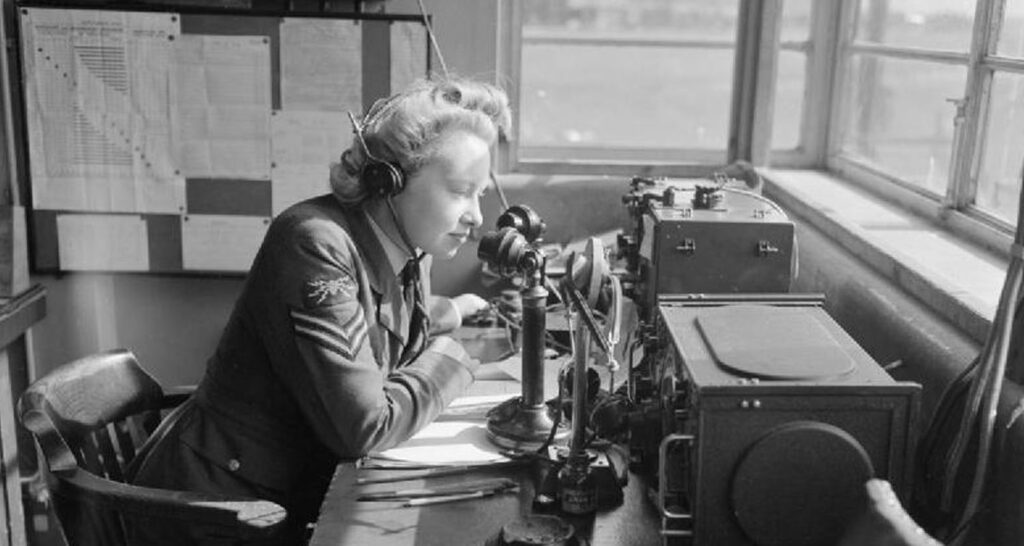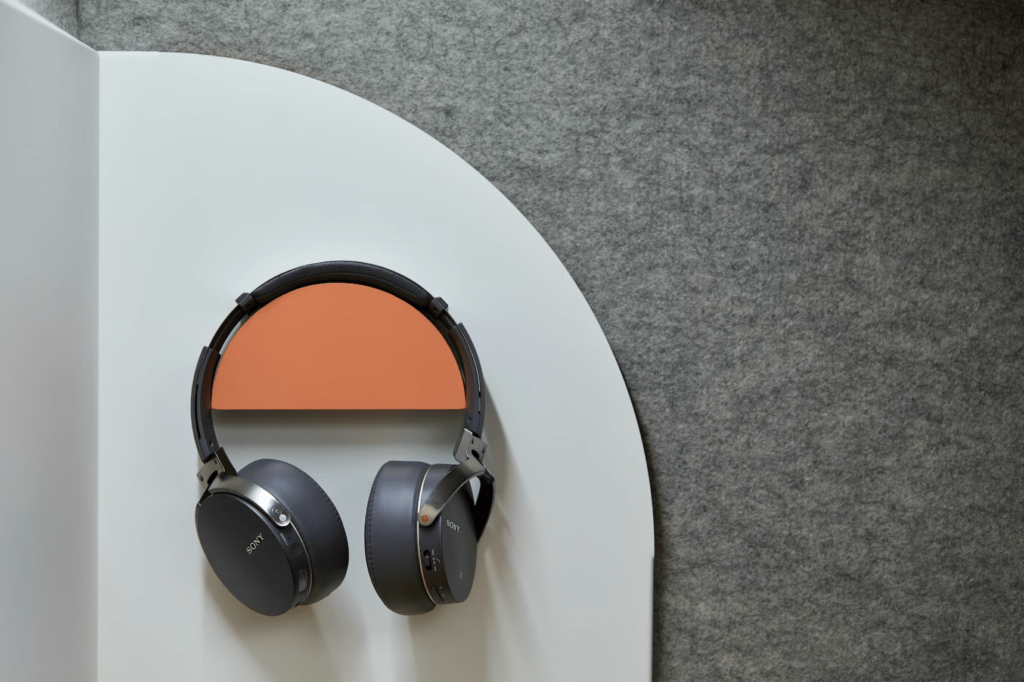The Invention Of Earphones: The Brief History
When Were Earphones Invented?
The invention of earphones has come a long way from being a luxury to a necessity. Nowadays, it’s hard to deny the need to have at least one pair of headphones. In 2020 alone, the headphones industry earned around $34.8 billion and sold as many as 514.5 million units in just one year!
But the headphones industry did not become a huge success overnight. It took decades of innovation to develop the headphones we know today. The origin story of headphones is quite fascinating, starting from the 1880s.
Are you interested in the origin story of the invention of earphones? Let’s dive in and see how headphone technology has evolved since then and what the future holds for this essential wearable tech.
The invention of earphones in the 1880s
The invention of earphones can be traced back to the 1880s when switchboard operators used a type of earphone invented by Ezra Gilliland. However, back then, smaller and more lightweight options were not available. These early earphones could weigh over 10 pounds and consisted of one earpiece attached to a phone and a large microphone resting on the shoulder. It was a far cry from the smaller and more comfortable earphones today. It’s fascinating to see how far headphone technology has come since then!
The invention of earphones in the 1891s
In 1891, Ernest Mercadier, a French engineer, received a patent for what he called a “bi-telephone,” the earliest known version of in-ear headphones. These lightweight and portable headphones appear similar to the IEMs we use today. This is quite impressive, considering that it was over 130 years ago! Mercadier even proposed using a rubber cover to protect the ear from friction while using them.
However, during the late 1800s, earbuds or headphones were not used for music listening, and the technology was limited to telephone use.
The invention of earphones in the 1890s
Today, there are countless methods to listen to music online with friends. However, what did people do over 100 years before the radio’s advent? This is where the Electrophone comes in.
The Electrophone was a specialized headphone that users connected to their telephone lines to listen to programs. It was like having Spotify for opera before the internet age! The headphones looked similar to the ones we use today, except that they were handheld with a rod connecting to the earpads rather than resting on top of the head.
The invention of earphones in the 1910s
Baldwin is widely credited with inventing headphones, as his design incorporated several significant improvements over earlier models.
His invention featured two padded ear cups and two headbands, similar to modern headphones, allowing for a comfortable fit without needing hands.
Despite creating a groundbreaking device, Baldwin initially failed to recognize its potential. He had developed the first headphones in his Utah kitchen to hear sermons at his local Mormon temple.
At first, investors were not impressed with the idea until the US Navy placed a large order for the headphones. This was because of their innovative design that didn’t require an external power source, opening up a massive business opportunity for Baldwin.
Unfortunately, Baldwin’s financial success was short-lived. He made several poor investments and even served a prison sentence for mail fraud, which resulted in his company going bankrupt.
The invention of earphones in the 1958s
While brands like Philips and Sennheiser are easily recognizable today, they owe their existence to John Koss. Back in the 1950s, headphones were not widely available for commercial use, with their use being mostly limited to the military and communication.
This changed in 1958 when Koss developed a “private listening system” called the Koss Model 390 phonograph, which included a record player, a speaker, and a headphone jack. To go with it, Koss also created the Koss SP-3 headphones, the first headphones explicitly made for music listening. These early headphones had plastic ear cups, a 3-inch speaker, and foam earpads for comfortable wear.
Koss’ innovation paved the way for more advancements in headphone technology and gave rise to the popularity of personal music listening.
The invention of earphones in the 1960s
Wireless headphones were already available decades before Bluetooth technology was invented. They were known as “radio headphones,” widely used in the 1960s and 1970s. As the name suggests, these headphones use built-in AM/FM radio antennas and 2-inch speakers in each padded earcup, allowing users to bring their radio and listen to it wherever they go.
Radios were very popular back then, so this innovation also helped deaf individuals to hear their radios better from anywhere. Today’s radio headphones are the early models of these headphones.
The invention of earphones in 1966
Not only was John Koss innovative in creating the first stereo headphones, but he also made significant advancements in marketing. In 1966, Koss released the Beatlephones, a branded headphone in partnership with the popular band The Beatles.
The collaboration with The Beatles proved to be a marketing success, extending the market for headphones to include a younger audience and integrating them into pop culture for the first time.
1969s
The headphone industry underwent another transformation in 1969 with the introduction of Sennheiser’s HD 414, the first open-back headphones. The design featured open ear cups, allowing for a more spacious and natural sound experience and a lighter and more breathable design.
These headphones significantly improved audio quality, making long-term listening more comfortable for users.
1979s
Previously, headphones were mainly used at home due to the lack of a portable audio source. However, with the advent of the Walkman, listening to music became more personal and private. The Walkman allowed users to listen to their music library, leading to cassettes outselling vinyl for the first time. Unfortunately, the headphones included with the Walkman (a single metal headband with two foam earphones) did not provide the best audio quality. This resulted in a surge in demand for third-party headphones. Sony unintentionally created a market for more brands and competitors to enter.
1989s
In 1989, headphones for private listening became more advanced with the introduction of noise-canceling headphones. These headphones use a small microphone that captures external noise and generates an equal and opposite sound wave to cancel out the noise.
Initially developed for pilots in the aviation industry and combat vehicle crew members in the Army, this technology soon gained popularity for personal use.
1990s
As portable music devices like cassette tapes, CDs, and minidiscs gained popularity, the perception of wearing headphones also changed. Rather than being confined to home use, people began to take their music with them on the go. This increased demand for smaller, more portable headphone technology, such as the Sony ‘Street Style’ headphones.
In response to this need, the 1990s saw the emergence of various types of compact headphones, including in-ear, earbuds, and neckband headphones.
1994s

Bone conduction technology has been known for decades as a means of hearing. It is said that Beethoven used it when he lost his hearing. However, it wasn’t until 1994 that Werner Bottesch patented the first bone-conduction headphones.
Initially, bone conduction technology was used primarily for the military, as it allowed sound to be transmitted through the bones of the skull rather than through the eardrum, enabling users to remain aware of their surroundings. Eventually, bone-conduction headphones became popular among everyday consumers and athletes, with companies like AfterShokz gaining recognition.
2001s
Apple’s technological and audio advancements became apparent by the start of the 21st century. The release of iPods revolutionized portable digital music listening, making traditional listening equipment such as cassette tapes and CDs obsolete.
Accompanied by the introduction of AirPods, the sleek and modern design of the iPods and earpods established a new aesthetic trend in the industry.
This development in portable music technology, similar to the Walkman’s impact in the ’80s, led to a significant growth in the market for affordable and lightweight earbuds that continues to this day.
2004s
For years, headphones were always connected to an audio source with wires until Bluetooth changed that.
Bluetooth technology has been in development since 1999. However, early versions of Bluetooth could only support voice calls, and the bandwidth was insufficient to handle streaming studio-quality music.
2008s

As we entered the 2010s, headphones gained even more popularity and became increasingly intertwined with fashion. In the 1960s, we saw the emergence of branded headphones with The Beatles, and this trend continued with rapper Dr. Dre’s release of his Monster Beats by Dr. Dre headphones – big, bulky, and bold.
2015s
Although wireless headphones and earbuds were not a new concept in 2015, as Bluetooth technology had been used for about ten years, they were not entirely wireless. Headphones were without a wire to the audio source but still had a wire connecting each earpiece. However, Onkyo, a Japanese audio equipment manufacturer, surprised everyone by releasing the first truly wireless headphones – the Onkyo W800BT. Everything was contained within the earbuds with wireless headphones, including the on/off switch, mic, and volume control. Although it did not come close to the technology of truly wireless earbuds available today, Onkyo proved the possibility of this technology and paved the way for other manufacturers to release their own.
2017s
Apple’s AirPods significantly impacted the market after their release in 2017, surpassing Onkyo’s truly wireless headphones. With the launch of the iPhone 7, Apple eliminated the headphone jack, prompting the creation of wireless AirPods that weighed only 4g each. They were lightweight and featured the ability to pause audio by double-tapping them and automatically breaking when removed from the ear.
AirPods quickly became one of Apple’s most popular accessories, selling over 60 million units. The AirPods’ distinctive and trendy appearance also became a massive trendsetter in the industry.
Their success inspired more manufacturers and brands to create their versions of AirPods, with some copying their appearance outright.
The 2020s – present day
As we progress, more smartphone manufacturers may follow in Apple’s footsteps and eliminate 3.5mm ports, potentially making wireless headphones the exclusive option. Increasingly, headphones are becoming more than simply listening devices; some models now include heart rate monitors, hearing protection, and fitness coaches.
Music will one day be stored, streamed, and played with headphones. Gaming isn’t the only use for virtual reality. There is a possibility that headphones will become more like hearing aids than portable accessories
We have much to discover about audio technology as it continues to evolve. Headphones have been revolutionized by the invention of earphones, also known as earbuds.
Conclusion
Over the past 100 years, technology advancements and changing consumer interests have driven constant innovation in headphones. Headphones have evolved from bulky wired ones to sleek wireless ones. Digital music players have become smaller and more portable as Bluetooth technology has developed. Fashion-forward headphones have also become more popular. We will have access to endless possibilities when it comes to future headphones. We still expected better headphones in the future too. Share your thought in the comment below. What do you think about future headphones?


